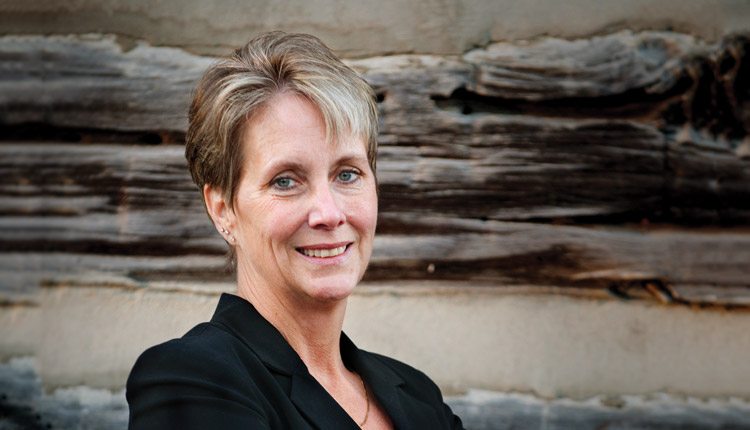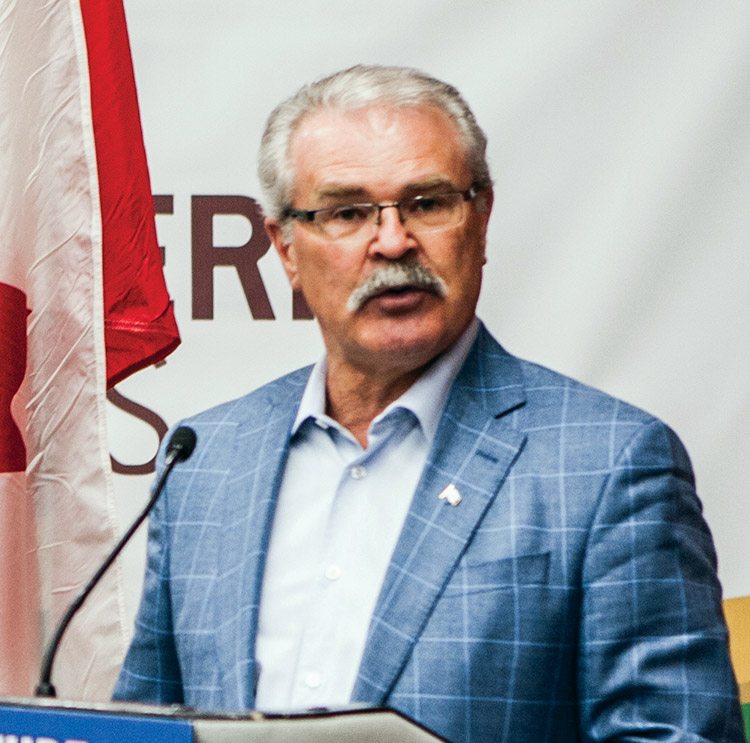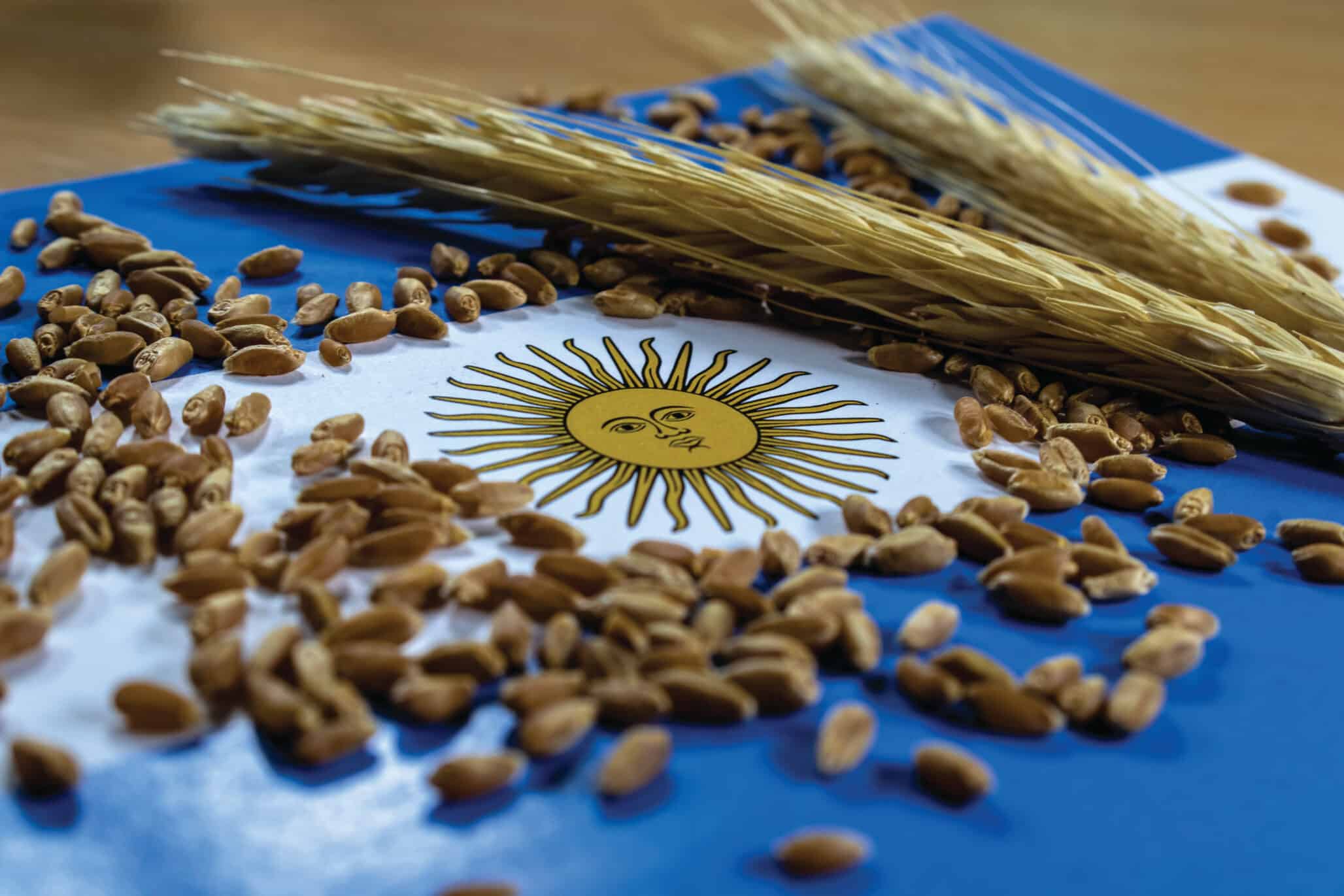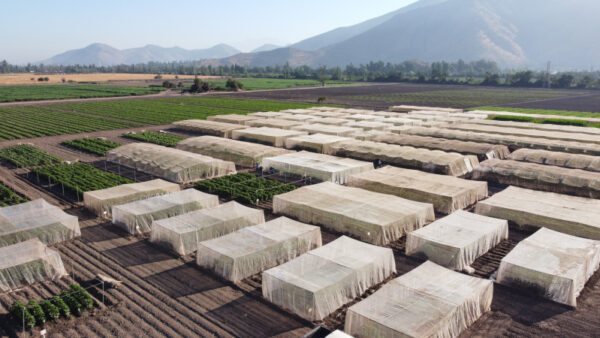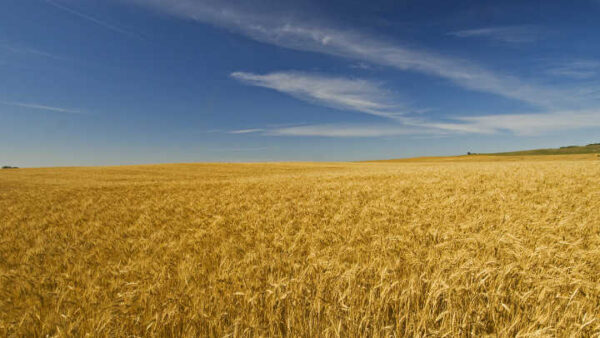To those who worked with her, Patty Townsend was the perfect person to take the Canadian Seed Trade Association where it had never gone before.
_x000D_
It wasn’t long ago that Todd Hyra would have hesitated to sit down with a Member of Parliament to advocate for the Canadian seed industry._x000D_
_x000D_
“To meet with federal MPs on Parliament Hill — for someone who has never done that before — could be quite intimidating,” says Hyra, who sits on the Board of Directors for the Canadian Seed Trade Association (CSTA)._x000D_
_x000D_
But when Patty Townsend took over as vice-president of the CSTA in 2006, things began to change in that regard._x000D_
_x000D_
_x000D_
“She coached us on how to communicate with politicians at a local level, a provincial level and a federal level, what their expectations are from their constituents, and how we can ensure our voice is heard,” says Hyra, SeCan business manager for Western Canada. “Her understanding of the political system and the personalities involved went a long way in helping us understand how to best communicate our needs as an industry. It was a great personal growth opportunity for many of us who had never experienced that before.”_x000D_
_x000D_
Hyra’s story is just one example of how Townsend, who retired earlier this year as CSTA’s chief executive officer, had a major effect on the organization and took it in an entirely new direction, raising its profile as the voice for the Canadian seed industry._x000D_
_x000D_
Those who know her and worked with her during her tenure at CSTA say she will be remembered for her strong work ethic and drive to ensure the Canadian seed industry succeeded — a mission that earlier this year led to the passing of some of the most important agriculture-related legislation._x000D_
_x000D_
Strength in Numbers_x000D_
_x000D_
Townsend joined the CSTA Board of Directors as vice-president with a primary focus on government, member and public relations, strategic planning and governance. In 2011, she became CEO. It was the beginning of dramatic change for the organization, which was founded in 1923._x000D_
_x000D_
She was CSTA’s first female chief executive, but it wasn’t the first time Townsend had broken barriers during her career._x000D_
_x000D_
After receiving her degree in agriculture from the University of Saskatchewan in 1980, she became the first female Agriculture Canada dairy inspector in Western Canada. Following that, she spent almost four years in a radio and television newsroom in Saskatchewan, before deciding to dedicate her career to association management and public and government affairs at the provincial, national and international levels._x000D_
_x000D_
Tom Steve, now general manager for the Alberta Wheat Commission, shared that newsroom with Townsend back in the 1980s. “Our desks were about three feet apart,” Steve tells. “She was on the agriculture news desk, and I was in the general news department. Right away, I picked up on her tenacity — she’s very determined and professional. That was the beginning of her working relationship with farmers, interviewing them about various issues of the day.”_x000D_
_x000D_
During the course of her career, Townsend has worked for and with farmers and companies involved in every sector of Canadian agriculture, and for academics, extension specialists, educators and scientists. Prior to becoming chief executive at CSTA, she was executive director of the Canadian Agri-Food Trade Alliance. When she took over the CEO role at CSTA, she brought that diverse experience with her._x000D_
_x000D_
“She brought together a diverse group of people from outside of the seed trade industry — grain handlers, farmers and various stakeholders,” Hyra says. “She could ensure everyone’s voice was heard and CSTA wasn’t operating in isolation.”_x000D_
_x000D_
According to Hyra, having worked with such a wide swath of people is what made her such an effective as CEO._x000D_
_x000D_
“She’s able to step far enough back so she can understand or pull together a broad enough group,” he says. “That’s key in a role like the one she filled, so you’re not just pushing one agenda, but rather having a broader industry solution that will gain more traction as you try to move it forward. Rather than just seed, you’re working on a comprehensive approach to meet seed industry needs. Patty can do that in spades.”_x000D_
_x000D_
Changing an Organization_x000D_
_x000D_
With its head office in Ottawa, Ont., CSTA brings together 125 seed company members engaged in all aspects of seed research, production, marketing and trade, both domestically and internationally. It was instrumental in ensuring the passage of Bill C-18, Canada’s Agricultural Growth Act, early this year._x000D_
_x000D_
The Act represents Canada’s formal ratification of the 1991 Convention of the International Union for the Protection of New Varieties of Plants (UPOV 91), which makes important changes to Plant Breeders’ Rights in Canada._x000D_
_x000D_
Were it not for Townsend, that may not have happened. According to Dave Carey, CSTA manager of policy initiatives, the organization was at a turning point when Townsend became CEO — either become more relevant and stand above the crowd, or continue to struggle to get the seed industry’s message out._x000D_
_x000D_
“Under Patty’s watch, CSTA became a trusted source of information for politicians and bureaucrats, which elevated the association’s profile,” Carey says. “We did a great job engaging our members, but didn’t do the same concerted outreach to regularly engage with policymakers._x000D_
_x000D_
“Her mantra was that CSTA as a modern organization couldn’t go it alone, and needed to bring together the whole value chain — including groups that don’t always share everything in common or have the same goals, whether they’re industry or grower-based. The philosophy she brought forward is that we collaborate whenever we can to come up with a unified message from the ag sector.”_x000D_
_x000D_
The initiative that best defined her philosophy, according to Alberta Wheat Commission’s Steve, was the formation of Partners in Innovation — a group of leading Canadian farmer and agricultural organizations that support government legislation intended to improve PBR in Canada. One of the group’s major goals was accomplished after the passing of Bill C-18 in February: the federal government formally ratified the UPOV 91 Convention in June._x000D_
_x000D_
_x000D_
“We had numerous conference calls and conversations over the course of the legislation being before Parliament,” Steve says. “I would say her determination on the tasks at hand was what struck me as being a hugely important factor in UPOV 91 becoming a reality in Canada.”_x000D_
_x000D_
Peter Entz, Richardson International’s assistant vice-president of seed and traits and former CSTA president, agrees. He describes Townsend’s drive to ensure UPOV 91 was ratified as “relentless.” Until June of this year, Canada was one of only two developed country UPOV members whose legislation did not comply with the 1991 Convention._x000D_
_x000D_
The passing of Bill C-18 is hailed as a modern victory for the Canadian seed industry, but Entz notes that it took years of behind-the-scenes work to get there — and much of that work was spearheaded by Townsend._x000D_
_x000D_
“When she wasn’t taking calls or doing interviews, she was serving as a liaison with bureaucrats,” Entz says. “It was really a very persistent, well-executed strategy to keep that issue on the radar for so long.”_x000D_
_x000D_
When Agriculture Minister Gerry Ritz broke the news on June 19 that Canada had formally ratified UPOV 91, it was a celebratory day that served to highlight how instrumental Townsend had been in ensuring the legislation was ultimately passed._x000D_
_x000D_
“We were able to go to our MPs and say, ‘Thank you for making this a reality, it means a lot to us,’” Hyra says. “That comfort level in approaching an MP, that will be something that stays with me forever because of Patty.”_x000D_
_x000D_
Working with Government_x000D_
_x000D_
Keeping an issue on the political agenda can be tricky for any organization — more so if its members don’t have much experience. Working directly with government represented a culture shift within CSTA, Entz notes._x000D_
_x000D_
“That was a place she took CSTA to that we hadn’t been before,” Entz says. “We’d been a little more subservient to government, sort of a ‘yes sir, no sir’ kind of attitude.Under Patty’s watch, we developed more of a collaborative relationship with government. She cultivated those relationships to the point where she was working very closely with the ag minister’s office and Gerry Ritz himself.”_x000D_
_x000D_
— Gerry Ritz
_x000D_
For Ritz, a conservative MP from Saskatchewan and agriculture minister in Prime Minister Stephen Harper’s cabinet who oversaw Bill C-18, Townsend was a driving force behind the legislation. He says the respect Townsend garnered in the Canadian seed industry helped her to be so effective at driving it forward. “She has been a consistent champion for our seed industry,” Ritz says._x000D_
_x000D_
Anthony Parker, commissioner of the Plant Breeders’ Rights Office for the Canadian Food Inspection Agency (CFIA), worked closely with Townsend for the past four years. From the perspective of someone who works on the government side, Parker says Townsend brought a fresh, modern approach that helped CFIA work effectively with the seed industry to help make UPOV 91 a reality._x000D_
_x000D_
“For the difficult problems, Patty knew the only way to overcome them was through cooperation and collaboration,” Parker says._x000D_
_x000D_
One of those problems was the large degree of misinformation among the public regarding the bill, Parker says._x000D_
_x000D_
“People didn’t understand it, the text was very legalese, and a small part of the agriculture sector that was opposed to it often dominated coverage in the media,” Parker explains. “Initially when we were trying to move the legislation forward, myself within government and Patty on the outside, she said something to me that sort of changed my perspective and still sticks with me to this day._x000D_
_x000D_
“She told me that the really challenging problems aren’t solved by one person anymore. They require a cooperative effort by everyone.”_x000D_
_x000D_
Leadership_x000D_
_x000D_
Dave Baute, CSTA past-president and the owner of Ontario’s Maizex Seeds, says Townsend will be remembered as a “master consensus builder” whose attention to detail was often unparalleled — something that made her a great leader and able to accomplish what she did for the industry._x000D_
_x000D_
“She has an amazing memory, and can draw facts and info from years past, and that afforded her a lot of credibility so people would listen to her,” he says. “She’s creative, doesn’t have a set formula for any particular course of action. You tend to follow people like that._x000D_
_x000D_
“I was reluctant to come onto the CSTA executive board at first, but it was her leadership that gave me the confidence to step into that role.”_x000D_
_x000D_
Townsend also has a work ethic Baute calls “second-to-none,” and Baute himself is no stranger to the importance of a good work ethic. He grew up in a family where hard work was valued, and no job was too small or insignificant._x000D_
_x000D_
“Patty was totally engaged all the time, and as a business owner I can relate to that,” he says. “To have that level of dedication is remarkable.”_x000D_
_x000D_
Today, Baute describes CSTA as the “go-to organization” for all matters that affect the Canadian seed industry, and he says that making it so will be what Townsend is most remembered for._x000D_
_x000D_
“It’s a nice feeling, but comes with a tremendous amount of responsibility,” Baute adds. “We’re in a position to pick up where Patty left off and drive CSTA forward. We’re in a very good spot, and Patty put us there.”_x000D_
_x000D_
_x000D_
In Her Own Words
_x000D_
Germination caught up with Patty Townsend just prior to her retirement as CEO of the Canadian Seed Trade Association. Here’s what she had to say.
_x000D_
What made CSTA so successful at lobbying government officials for the ratification of UPOV 91 in Canada?
_x000D_
From an organizational perspective, you can’t do things in isolation anymore. Things need to be done in partnership with people who have similar interests and things to gain. The reason this really happened is that most of the farm organizations and farmers representing all commodities across Canada came together to tell the government that this was really important to them.
_x000D_
What’s your advice in working to accomplish industry goals?
_x000D_
We don’t have the answers to everything, and we need to work with partners in the value chain to achieve goals. It’s not easy to do that — [people] often think that things need to be 110 per cent how they want, when their chances of getting that are less than zero. If you can accommodate their interests and deal with the fears and the anxieties of the entire value chain and come up with something that will take you 99 per cent of the way, you’ve really made progress.
_x000D_
How did you get farmers’ support?
_x000D_
You tell them the truth. You ask them, not tell them, to help design something that’s going to work for everyone. Yet, [you must] be willing to make compromises, and know that you can’t do it without them.
_x000D_
Now that UPOV 91 has been ratified, what needs to be done?
_x000D_
There are issues around biotechnology approvals, and that’s not just Canada — it’s an international issue that’s really important. Our world is getting smaller, and seed can travel through 10, 15 and 20 different countries before it reaches its final destination. Countries that haven’t approved genetically modified traits — countries with different phytosanitary reguiations — can hold that journey up.


